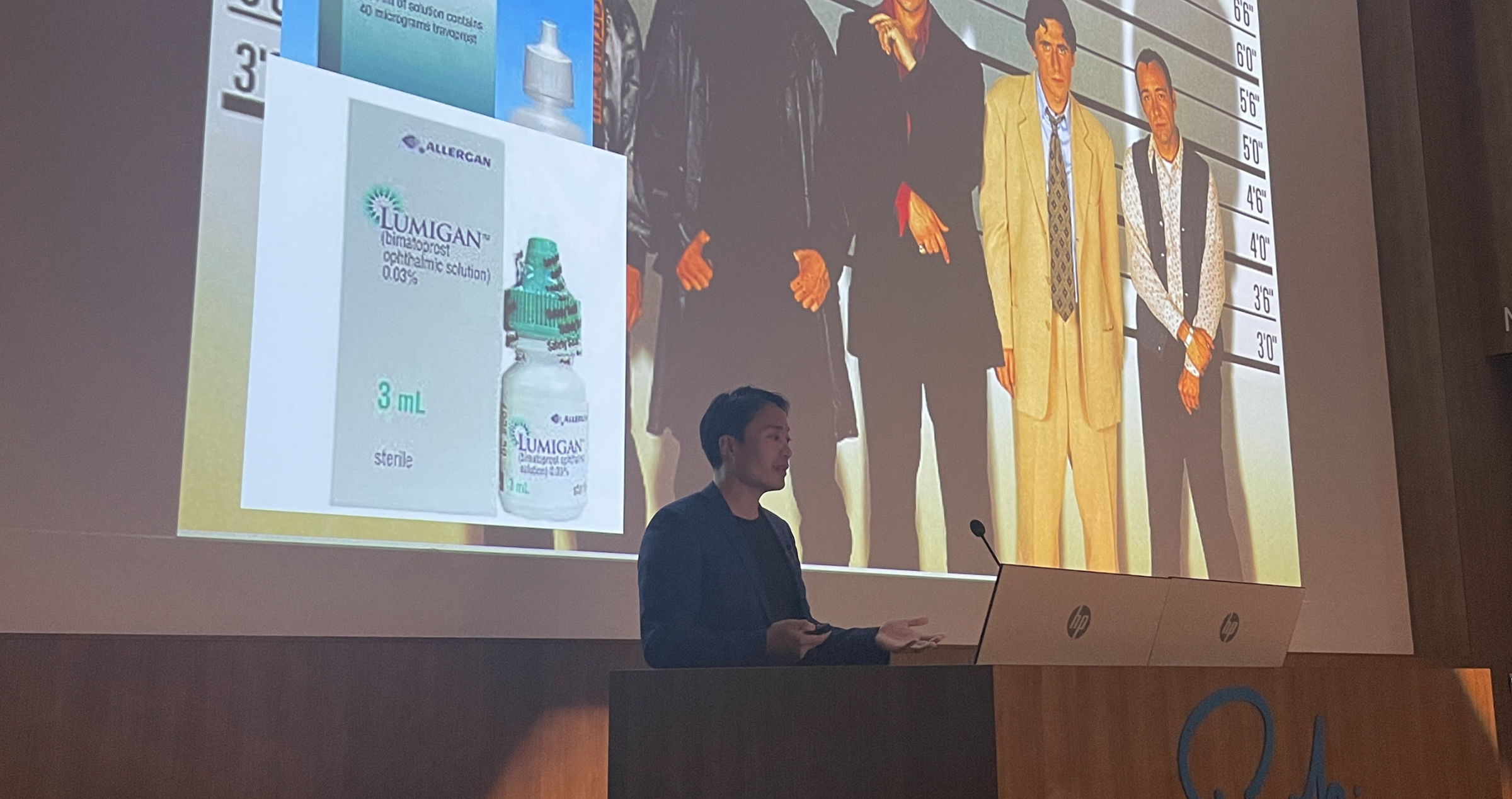Share
On the 1st April 2023, the Perth Glaucoma Support Group met for their first face-to-face event since 2021. During the event, which was held at the Harry Perkins Institute of Medical Research, leading Ophthalmologist Dr Jason Lim gave an informative presentation on updated medical treatments and surgeries. Glaucoma Australia CEO, Richard Wylie, was also in attendance along with a number of Glaucoma Australia clinical volunteers. Overall, the event was a great success with over 70 guests in attendance.

Overview of Dr Lim’s Presentation
Dr Jason Lim graduated from the University of Western Australia and completed his glaucoma and cataract fellowship at St Paul’s Eye institute in the Royal Liverpool Hospital, United Kingdom. Since then, he has brought non-penetrating glaucoma surgery to Western Australia, being the first fully trained, fellowship trained, non-penetrating glaucoma surgeon in Western Australia.
Dr Jason Lim emphasised the core message that glaucoma treatment is aimed at prolonging your vision for the duration of your lifespan. Currently, glaucoma management is primarily aimed at lowering intraocular pressure (IOP), which is the fluid pressure within the eye. Dr Lim explained that this fluid, called aqueous, nourishes the eye similarly to the way that blood nourishes the body. To treat glaucoma, IOP can be reduced in two ways; either by increasing the outflow of aqueous in the eye or by decreasing the amount of aqueous produced in the eye.
Traditional medical therapies which many glaucoma patients may be familiar with include Xalatan, Travatan, Lumigan, Xalacom and Combigan and other preservative free options such as Saflutan and Ganfort, have been the mainstay treatment for glaucoma for many years.
Surgical treatments that have been traditionally performed such as trabeculectomy involve removing a small section of the eye (iris and sclera) to increase the outflow of aqueous. Dr Lim warned that this treatment can sometimes inadvertently cause IOP to reduce too low (hypotony), which makes the outcome of this procedure difficult to predict. Alternatively, deep sclerectomy which involves removing a section of the sclera (the white part of the eye) and has similar results to trabeculectomy.
MIGs is a more recent minimally invasive glaucoma surgery which is quick, effective and can be performed prior to or instead of more invasive incisional glaucoma surgery. It involves small incisions to place a stent in the eye to lower the IOP. Types of MIGs include iStent inject, Xen and most recently, PreserFlo which has only been available in Australia since 2022. Due to its larger design and therefore capability to drain more fluid out, PreserFlo has become highly used, particularly by Dr Jason Lim as it shows better safety and IOP reduction.
More recently, new medical therapies have become available internationally, however not all are readily available in Australia yet. Some of the newer eyedrops including Rhopressa, Roclatan and Vyzulta may have added benefits, with the potential to be alternative first and second-line treatments in glaucoma. Use of these eyedrops are patient dependent and subject to availability in location, so it should be discussed with your optometrist or ophthalmologist.
Alongside medical and surgical management of glaucoma which has typically targeted IOP reduction, research has also shown some benefits of supplements and exercise in optimising the health of your eyes. Vitamin B3 has been shown to prevent and halt glaucoma progression through supplementation of retinal nerve cells, although dosage of Vitamin B3 required is very high at 40g. Additionally, Gingko Biloba Extract, a tree native to China, has antioxidants which are vital to mitochondria. The mechanism of Gingko is not certain, however it has demonstrated improved blood supply to the optic nerve which is vital in glaucoma. Dynamic exercises have also been shown to decrease IOP, although some isometric exercises such as certain yoga poses may cause transient pressure spikes.
We would like to give a warm thank you to Gaela Hilditch and Dr Jason Lim for hosting a highly engaging event for the Perth community. Glaucoma Australia CEO, Richard Wylie, also flew from Sydney to be part of the presentation and meet members of our Perth Support Group.

About the authors
Nettie Ng and Shakeeta Kumar have completed a Bachelor of Biomedical Science and are currently final year Doctor of Optometry students at the University of Western Australia. Alongside their studies, they enjoy being clinical volunteers for Glaucoma Australia and appreciate the opportunity to learn from ophthalmologists such as Dr Jason Lim. They both look forward to commencing their clinical placements, gaining experience in rural and international health settings including Broome and India.


